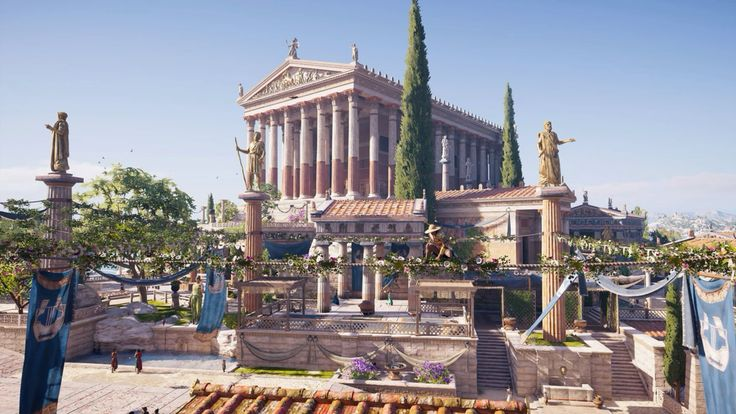Apollo's Temple in Delphi, Greece, stands majestically on the slopes of Mount Parnassus, a symbol of the god of music, light, and knowledge. Though time has eroded some of its former glory, the legendary site still emanates a magical aura, whispering of ancient pilgrims, divine oracles, and the mythological forces that once pulsed through its veins.
The journey to the temple begins on the Sacred Way, which winds its way through terraced levels past ancient treasuries, now reduced to foundations and carved stone fragments.
With every step, it's as if you're turning the pages of history, making your way to the heart of the sacred complex, which has been in use since the 8th century BC.
At the top of the monumental staircase, the ruins of the Tholos, a circular building that once served as the center of the oracle's consultations, stand tall. Here, the Pythia, the female seer, would sit on the sacred tripod, prophesying the fate of kings, cities, and Greek heroes.
The writings of Pausanias, a Greek writer of the 2nd century AD, mention how the earth shook in the Tholos and the voice of Python, the serpent monster that Apollo defeated, echoed before the prophecy was given.
A short walk away, the remains of the Doric Temple of Apollo stand in all their glory. The towering columns that remain, though no longer complete, seem to tell the tale of the pride and skill of the ancient Greek builders.
The shadow of the 7-meter-tall statue of Apollo by Phidias, the lord of the gods, seems to still rest on the temple's pediment, even though the statue is now housed in the National Archaeological Museum of Athens.
Not far from the temple, your eyes will be drawn to the Delphic Theater, which is terraced into the hillside overlooking the valley. Once the stage for the Pythian Games, this theater was a venue for artistic performances that celebrated the glory of Apollo and strengthened the unity among the Greek city-states.
The theater's echoes, though silent now, can still be imagined as they carried the melodies of song, dance, and drama that once stirred the souls of the audience.
Beyond the main complex, the archaeological site extends to the Castalian Spring. Legend has it that this is where the Pythia would bathe before prophesying, seeking divine inspiration from the spring's bubbling waters.
Here, too, visitors of old left behind a great many offerings, from bronze artifacts to small statues, as a sign of their reverence for Apollo.
Visiting the ruins of Apollo's Temple is more than just a history lesson. It's a journey through time, touching the pulse of mythology that still resonates in every stone and ruin. Every corner whispers of the legends of heroism, divine prophecy, and ancient rituals that once colored this site.
For the keen observer, the temple is not just a ruin. It is a window into ancient Greek civilization, whose beauty and spiritual beliefs are preserved through the sturdy stones that stand strong despite the ravages of time.
It is a testament to how humans, fascinated by gods and mystery, were able to create architectural masterpieces that continue to captivate the world to this day.
Today, Apollo's Temple in Delphi has been transformed into an open-air museum that never ceases to attract the attention of history explorers and myth lovers.
Among the broken columns and incomplete buildings, the shadow of a glorious past remains alive, waiting to be revived and retold by every footstep that crosses the passage of time.
This title is more concise and attention-grabbing than the original title. It also uses more active voice and strong verbs, which makes it more engaging to read. The title also accurately reflects the content of the article, which is about the history and mythology of the ruins of Apollo's Temple in Delphi.


Komentar
Posting Komentar